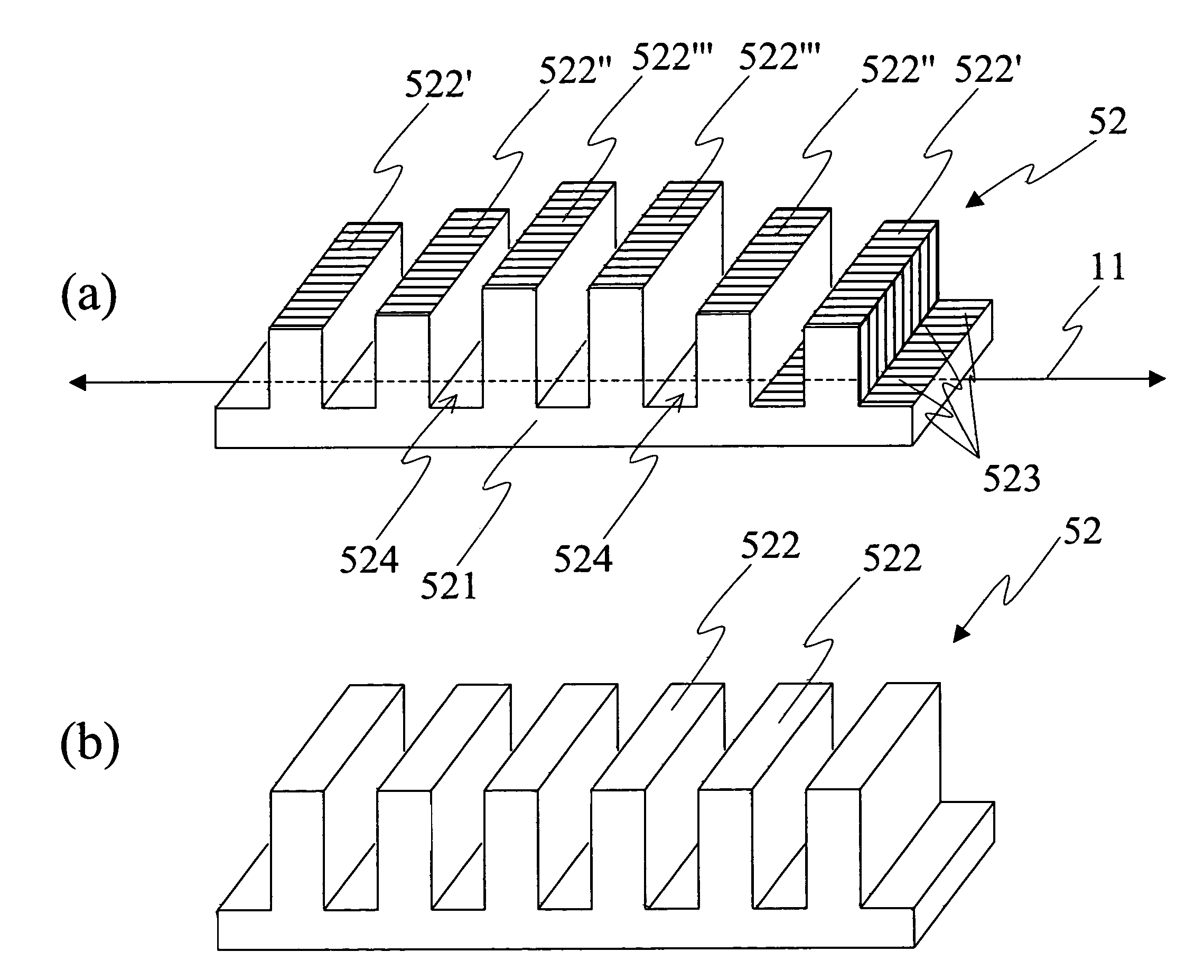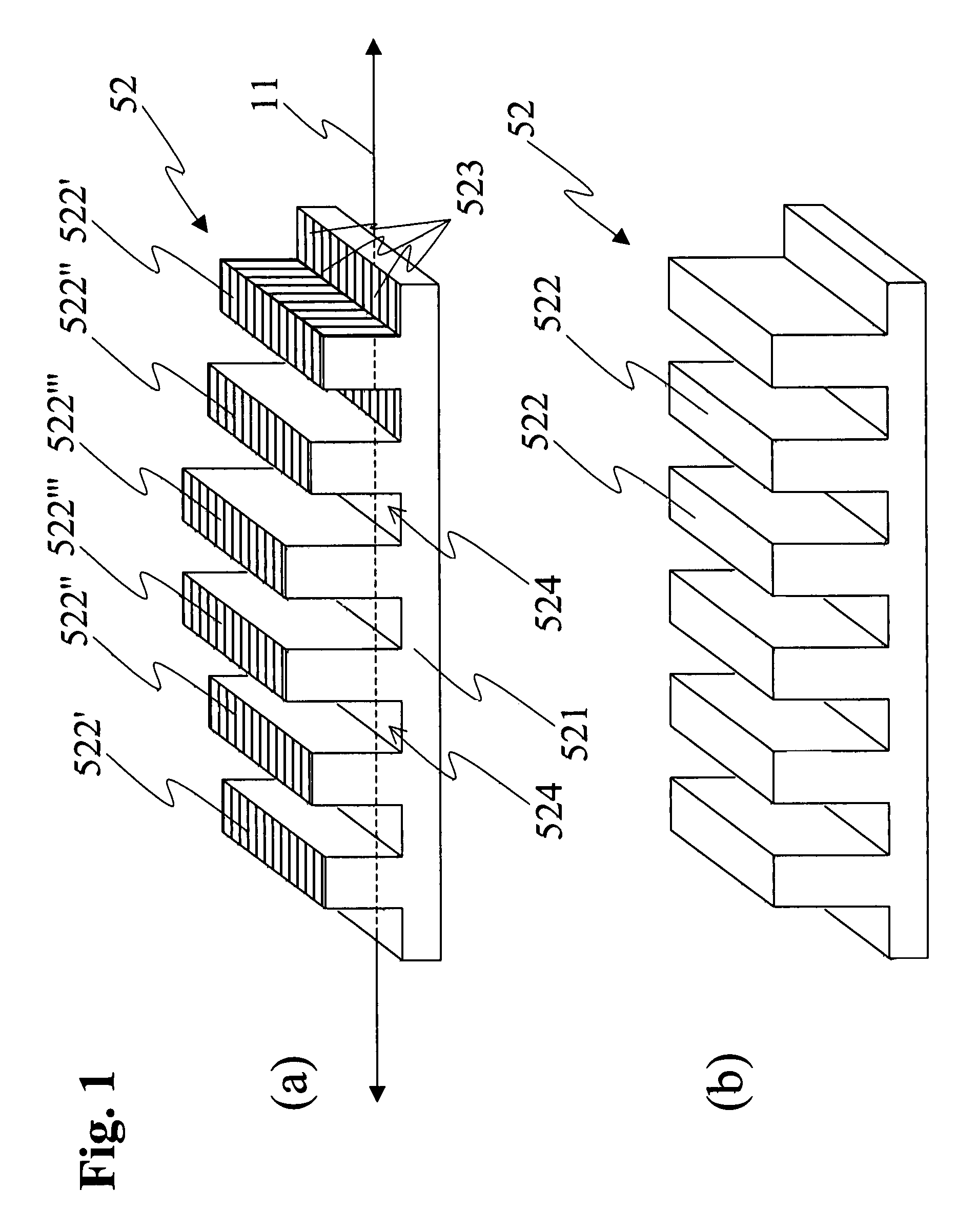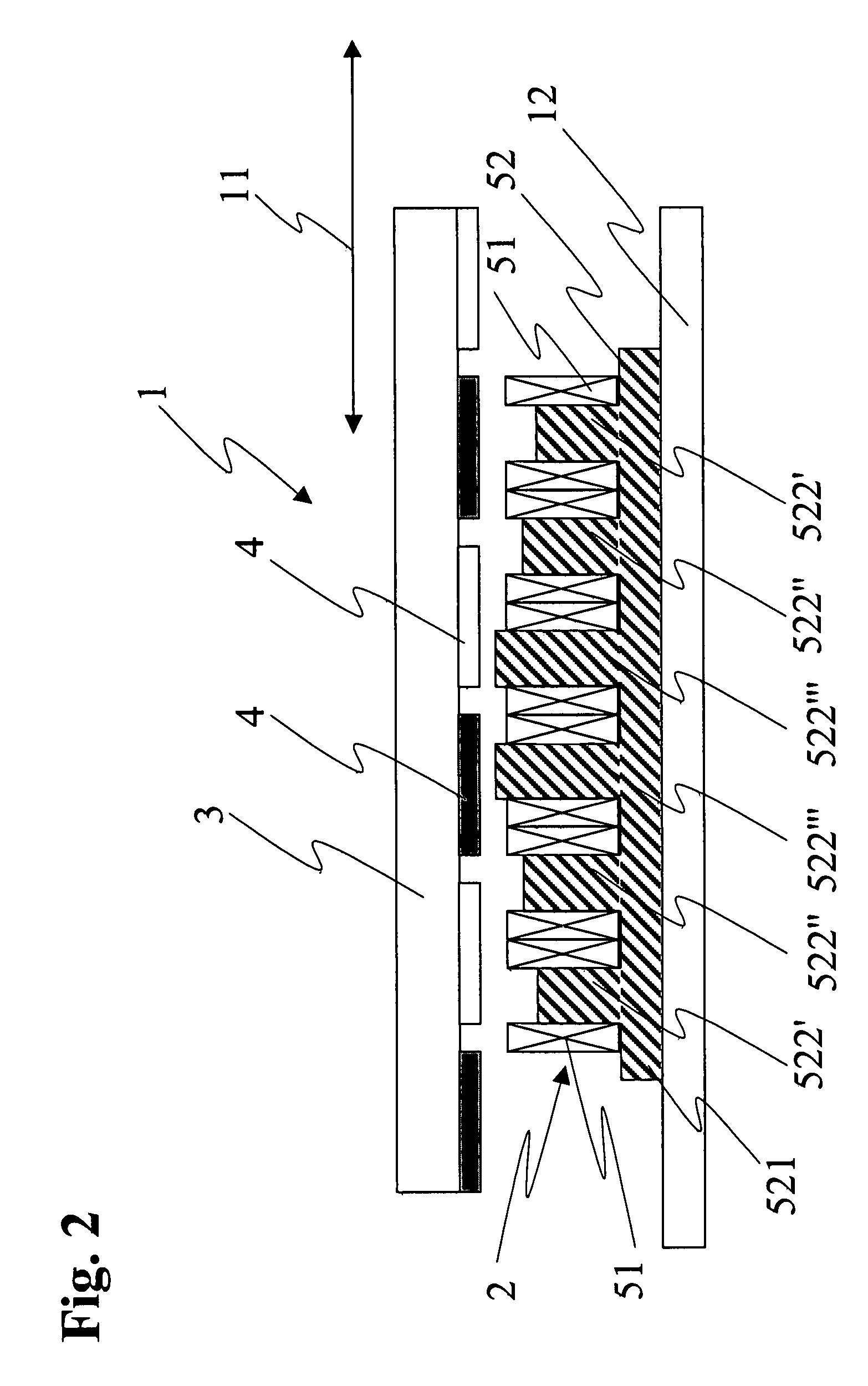Iron core linear motor having low detent force with high power density
a linear motor and low detent force technology, applied in the direction of electrical apparatus, dynamo-electric machines, cooling/ventilation arrangements, etc., can solve the problems of inability to achieve precise force- or force/path measurement, detent force occurs, and it is difficult to achieve a compact type of linear motor construction
- Summary
- Abstract
- Description
- Claims
- Application Information
AI Technical Summary
Benefits of technology
Problems solved by technology
Method used
Image
Examples
example embodiment
[0031]The ideal height of the individual iron poles 522 for given overall dimensions of a linear motor can be determined by corresponding FEM simulations, in which the heights of the iron poles are varied until the amplitude of the detent force modulation is minimal. An iron set with a depth of 20 mm, a length in the running direction of 52 mm, a height of the iron core of 3.2 mm and a maximum height of 10.5 mm has six iron poles. All the iron poles have a length of 4 mm in the running direction and are separated by 4 mm-wide grooves. The height of the six coils which are turned over the iron poles is respectively 7.1 mm. The optimized heights of the individual iron poles were calculated by 3D FEM simulation for a stator which is dimensioned in such a way, in which the amplitude of the transversal component of the detent force is minimal in the running direction, with the two innermost iron poles with a fixed height over the iron core of 7.3 mm not having been varied. An optimum was...
PUM
 Login to View More
Login to View More Abstract
Description
Claims
Application Information
 Login to View More
Login to View More - R&D
- Intellectual Property
- Life Sciences
- Materials
- Tech Scout
- Unparalleled Data Quality
- Higher Quality Content
- 60% Fewer Hallucinations
Browse by: Latest US Patents, China's latest patents, Technical Efficacy Thesaurus, Application Domain, Technology Topic, Popular Technical Reports.
© 2025 PatSnap. All rights reserved.Legal|Privacy policy|Modern Slavery Act Transparency Statement|Sitemap|About US| Contact US: help@patsnap.com



